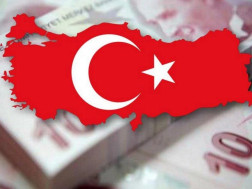In 2021, Ukraine’s economy will almost recover from the losses inflicted by the coronavirus crisis: Ukraine’s GDP will rise by 4.2%. National Bank of Ukraine’s (NBU) estimates relies on several factors, out of which the first is strong domestic demand and the second – recovery in investment activity.
The NBU estimates Ukraine’s GDP declined by 4.4% in 2020. The decline was less than expected in the previous forecast, particularly because of the faster economic recovery in H2. As for, 2021, an estimated 4.2% has been explained by NBU Governor Kyrylo Shevchenko at a press briefing on Monetary Policy, “first, further increases in real household income will support strong domestic demand. Second, lower uncertainty about the course of the pandemic will impact recovery in investment activity.”
“In 2022–2023, the Ukrainian economy will continue to grow steadily, at around 4%,” said Shevchenko.
The surplus of Ukraine’s current account is expected to hit one of its record-high levels, reaching 4.8% of GDP. However, the current account will go into deficit again in 2021–2023,” he told.
In Shevchenko’s words, “although the prices of, and external demand for, Ukraine’s main exports will remain reasonably high, terms of trade will deteriorate due to rising energy prices. The economic recovery will be accompanied by a gradual increase in investment imports. Consumer imports will continue to rise steadily, driven by the expected increase in household income.”
The main risks to this macroeconomic forecast are a rise in coronavirus cases both in Ukraine and globally, and a large inflow of foreign debt said the Governor adding that the worldwide vaccination is reducing the risk of repeated lockdowns. However, there is a possibility of local quarantines, which will have negative consequences for economic activity.
“That said, global extremely loose monetary conditions and the optimism about vaccinations have significantly boosted the interest of foreign investors in emerging markets, including Ukraine. Large capital inflows could lower inflationary pressures through the exchange rate channel. Other risks also remain significant. They include: an escalation of the military conflict in eastern Ukraine or on the country’s borders; higher inflationary pressures arising from trading partners and higher volatility of global food prices,” NBU Governor told.
















